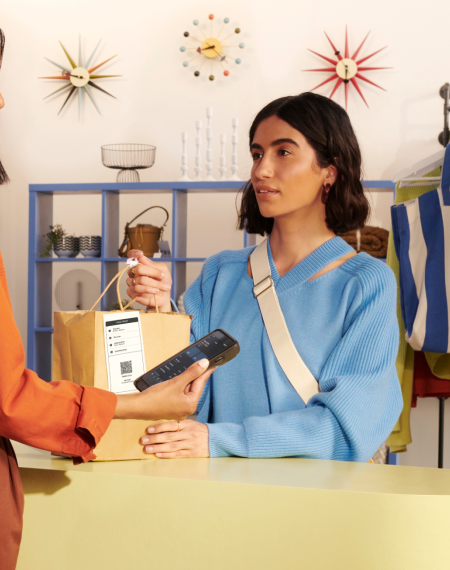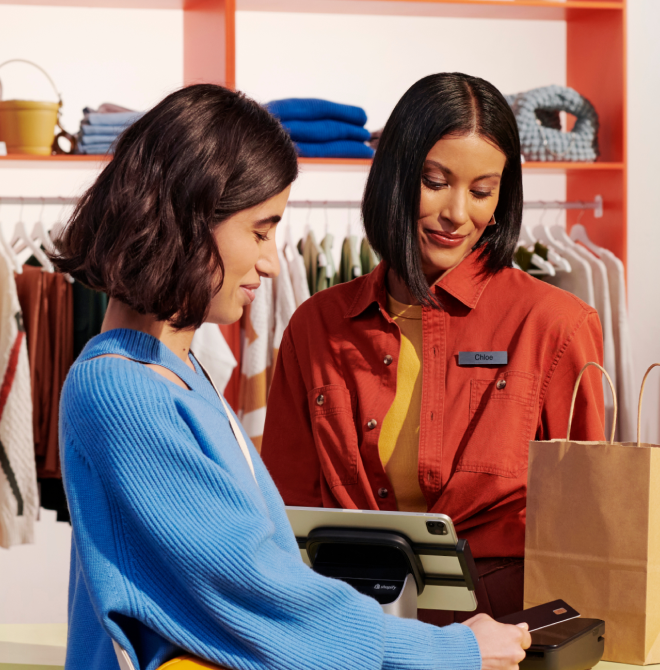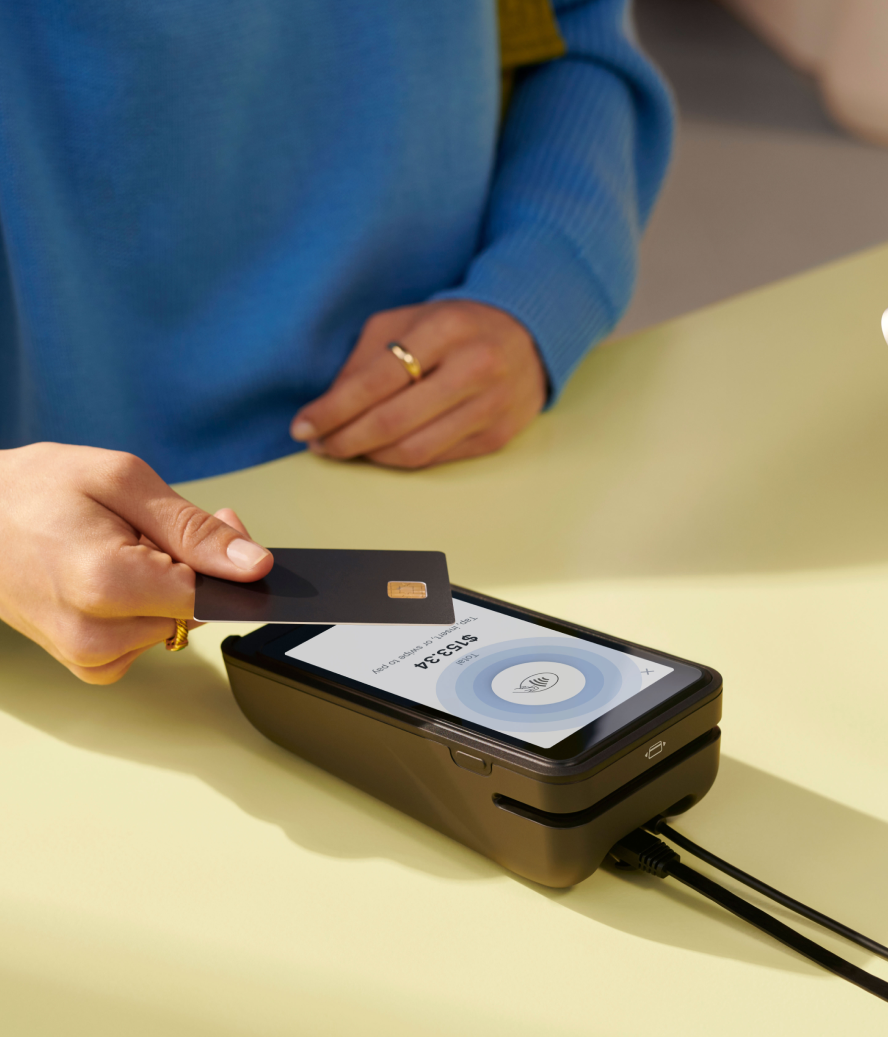You've worked hard to get your store ready for its big opening day. You've made the shop look nice, told people about it online, and ordered snacks.
But when customers start coming in and shopping, a long line forms at the checkout. You realize your staff aren't used to the cash registers and can't keep up with everyone waiting.
The truth is, many new businesses need some practice before the big day. Since only about 71% to 85% of new businesses make it through their first year, giving your business every chance to succeed is important.
That's where a soft opening comes in. It's a way to find and fix problems before your real customers arrive. Here's what you need to know about a retail soft opening, with tips on how to plan yours.
What is a soft opening?
A soft opening is when a business opens its doors—or unveils its website—to a limited group of people before its official grand opening (also called a hard opening).
A soft opening serves as a trial run where you can test your products and operations on a small, low-stakes audience, often friends and family. This way, you can gather feedback and make improvements before the official launch when you are open to the public and there’s more on the line.
What is the goal of a retail soft opening?
The purpose of a soft opening at a new retail location is to evaluate your operations and procedures to smooth out any snags before your grand opening.
Your soft opening is a practice round where you and your staff can test floor organization, sales techniques, register operations, and transactions. If you notice issues, like long lines at checkout or customers asking the same questions, you can make tweaks to improve your sales flow and ensure the public doesn’t experience these issues.
How does a soft opening differ from a grand opening?
A soft opening isn’t just a smaller-scale event than a grand opening. Here’s how soft and grand openings differ in size and purpose.
Access
Soft openings are meant to be smaller in attendance than grand openings, which are usually open to everyone. Soft openings are often invitation-only, open to just friends, family, local press, and other local business owners.
Focus
Soft openings are about improving. The primary focus is gathering (and implementing) feedback. The primary focus of grand openings, on the other hand, is attracting and earning new customers. While you may gain useful feedback at your grand opening, your energy will more likely be spent socializing.
Length
Soft openings can last several days or even weeks, however long it takes to gather feedback and make changes. On the other hand, grand opening events are typically one-day or one-week affairs designed to build buzz and draw in loyal customers before settling into normal operations.
What are the benefits of having a soft opening?
A soft opening can offer various benefits for retail stores, from product polishing to improved business processes. Here are a few key advantages.
Get feedback on your product
Even after rounds of product testing, a soft launch is a chance to test your product in a semi-public setting. Suggestions can lead to refinements, while praise can become the first testimonials on your website.
Polish your operations
Long checkout lines or point-of-sale (POS) issues can dampen the mood on your grand opening day. A soft opening can reveal these issues and ways to fix them, preventing them from arising when the general public arrives.
💡Tip: Shopify acts as a complete command center for your retail operations—no matter where you sell. It unifies inventory, order, and customer data into one business “brain”, without the need for patchy middleware or integrations. It’s why Shopify POS has been proven to lower total cost of ownership by 22% on average.
Prepare your staff
A soft launch gives your employees—from sales staff to online customer service reps—a chance to practice their skills and get used to the sales process in a lower-stakes setting. With practice, they can avoid mistakes and be their best on your official opening date.
Establish community connections
Use your soft opening to form relationships with community members by inviting local press or other small business owners. This can open the doors for partnerships, word-of-mouth recommendations, and other forms of support and networking.
Create hype
Like a grand opening, a soft launch can generate buzz around your business. If guests enjoy their experience, they’ll likely recommend your business and help attract customers.
How to plan a soft opening
- Create a budget
- Determine the scope
- Schedule your opening
- Decide the length of your event
- Compile your invitation list
- Capture feedback
- Analyze the results of your soft opening
- Organize feedback into categories
- Look for patterns
- Prioritize essential improvements
Ready to open your doors? Here’s a guide for planning and executing an effective soft opening for your retail store.
1. Create a budget
The sky’s the limit when soft launching a retail store. You might have grand plans to host give away free products, host product demonstrations, and create an Instagrammable photo wall—but all of these things come at an additional cost. Set a budget beforehand to ensure you’re not going into the red when launching your store.
When planning your budget, consider:
- The number of guests you'll invite
- How deep will your discounts be
- What freebies or samples you offer
- Whether you need extra staff hours for training
- If you'll hire entertainment or influencers
- Your customer acquisition target cost (what you're willing to spend to acquire each new customer)
Remember that while a multi-day event costs more upfront, it might provide a better return on investment through more thorough testing and feedback before your grand opening.
2. Determine the scope
Figure out what matters most to you. Do you want to see how customers react to your products? Or do you care more about making sure checkout runs smoothly? Maybe you want your staff to practice specific things, like how they greet customers or how they sell memberships.
Once you know what you're testing for, make your soft launch match those goals. For example, you might offer just a few key products (like how restaurants sometimes start with just their best dishes) or have your team focus on one part of the sales process.
3. Schedule your soft opening
If you schedule the soft opening well before your grand launch, you'll have time to make big changes to your products or how you sell things. But leave too much space and risk hype from your soft opening dying down before you open to the public.
If you hold it just a week or two before your grand opening, you can test everything at once to make sure you're ready. It also keeps people excited in the interim.
4. Decide the length of your event
Running your soft opening for multiple days helps work around guests' busy schedules, avoid too many customers at once, and reduce stress on your servers. You could even focus on different skills each day (like upselling one day and quick service the next).
For example, a clothing store might have a three-day soft opening:
- Day 1 focuses on fitting rooms and customer service
- Day 2 tests checkout systems
- Day 3 gathers product feedback
The problem is you might not get enough feedback in such a short time. If people are giving helpful criticism, you might want to extend your soft opening and keep making improvements until you and your staff feel ready. Just make sure to account for this in your budget.
5. Compile your invitation list
A soft opening is also an opportunity to create relationships with new potential customers.
Find individuals from your target audience and demographics. If you sell high-end tennis gear, for example, conduct local searches for tennis clubs and teams. Consider inviting:
- Social media influencers
- Local or industry-related press
- Other small business owners who can lead to word-of-mouth recommendations and future partnerships
- Friends and family
- Customers who’ve bought from your online store
You can also forgo a guest list and simply open your doors without a public announcement, allowing a small amount of organic traffic to trickle in before your publicized opening day.
6. Capture feedback
The most important element of a soft opening is the honest feedback from your target customers, so make a robust plan early on about capturing it.
There are various ways to gather constructive feedback, including informal conversation, anonymous feedback surveys, and email surveys after the event. Keep feedback questions simple, neutral, and goal-oriented, balancing closed and open-ended questions.
💡Tip: Gather feedback with survey tools like Yotpo or Grapevine. Both integrate with Shopify, so you can automatically invite customers to provide feedback after making a purchase from your retail store.
7. Analyze the results of your soft opening
Once your soft opening ends, you’ll have a pile of feedback. But it can be overwhelming to digest this information, especially if you’re exhausted from the opening itself.
You’ll likely receive valuable feedback on various elements, from your products to the colors of your walls or website. To help digest the feedback, organize it according to subject matter—for instance, products, sales floor, customer service, and sales cycle. This helps you prioritize what needs fixing before the grand opening.
8. Prepare for the grand opening
With your grand opening approaching, don’t overwhelm yourself and your staff by making last-minute tweaks to nonessential elements.
Not every piece of feedback necessitates an immediate change. When evaluating comments, look for patterns and similarities that suggest many of your customers may be experiencing a similar issue. If one person struggled with their discount code, but 15 people asked where to go to check out, you probably want to focus on checkout signage first.
Focus on issues that convert directly to sales (like improving checkout or employee training). Remember, you can keep making changes after your grand opening.
💡Tip: Shopify creates a unique customer profile for everyone who shares their email address or phone number with your business. Use this as an opportunity to follow-up with people who attended your soft opening. A personalized email to invite them to the grand opening, perhaps with a discount code on the products they were viewing at the event, can keep the momentum going when you launch to the public.
Common pitfalls of a retail soft opening
Inviting the wrong number of people
One of the biggest mistakes stores make is getting their guest list wrong. Too few guests means you won't get enough feedback to find problems. Too many guests can overwhelm your workers and systems before they're ready.
The best approach is inviting enough people to mimic real customer traffic without pushing your team too hard.
Not tracking foot traffic
If you don't track how many people enter your store and where they walk, you miss important insights about shopper behavior.
Simple tools like foot traffic counters, store heat maps, or just watching customers can show you which displays catch attention, where lines form, and if staff are in the right places. Missing this step means missing chances to improve your store layout and staffing.
💡Tip: Install the Dor app for Shopify to automatically track how people move throughout your retail store. It uses thermal sensors to gather foot traffic data, which you can compare to sales and transaction data inside your POS system.

Not having a plan for feedback
Without a system to collect, organize, and review feedback, valuable insights can get lost in casual conversations or forgotten. Set up a clear method, like digital surveys, paper forms, or follow-up emails, to turn customer comments into improvements.
Retail soft opening FAQ
How long does a soft opening last?
A soft opening can last anywhere from a single night to several weeks, depending on your goals, your budget, the type of feedback you receive, and how soon you’d like to host your official grand opening.
Do you announce a soft opening?
A typical soft opening is invitation-only, so any announcement you make would be limited to a select number of people. If you choose not to have an invite-only event, you may quietly open your doors without a public announcement to naturally limit attendance.
What role does customer feedback play during a soft opening?
Customer feedback is the primary purpose of a soft opening. You use insights you gain during the event to improve your business model or employee training processes and increase the success of your official grand opening.
Do customers pay at a soft opening?
Yes, customers usually pay at soft openings, just like normal visits. But many stores offer discounts, free samples, or free items to get your feedback and make you feel welcome.
What should I expect at a soft opening?
At a soft opening, you'll see the business testing how things work before they fully open. There might be fewer people, not all products available, or staff still learning their jobs. Your opinions and feedback are very important during this time.
Is a soft opening a good idea?
Yes, soft openings are smart because they help find and fix problems before the real opening. Staff gets real practice, the business can spot issues, and it creates early excitement from trusted guests and local people.





